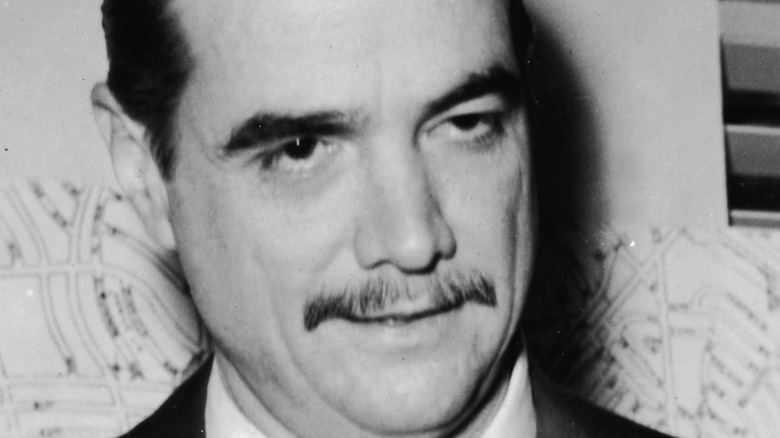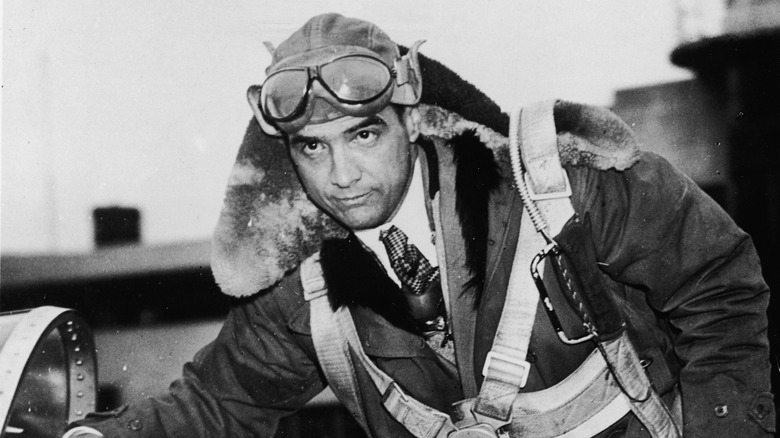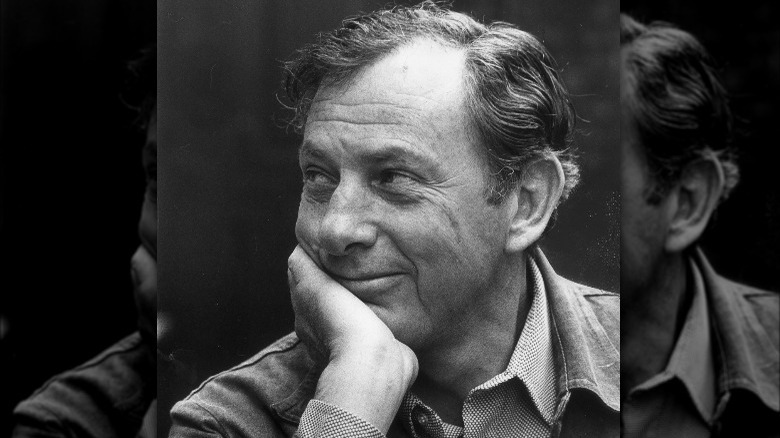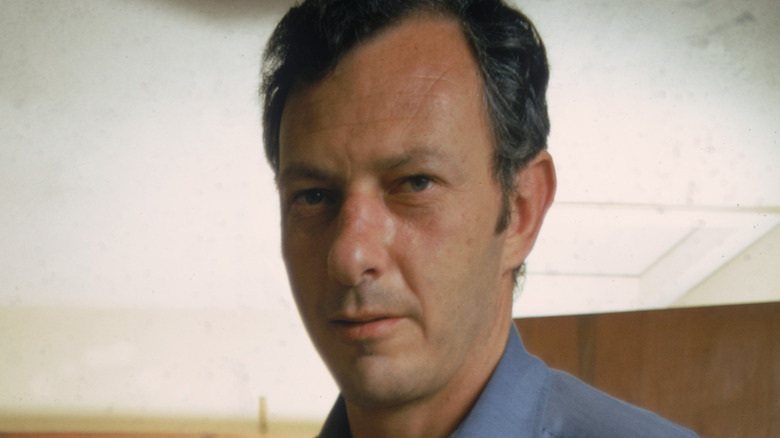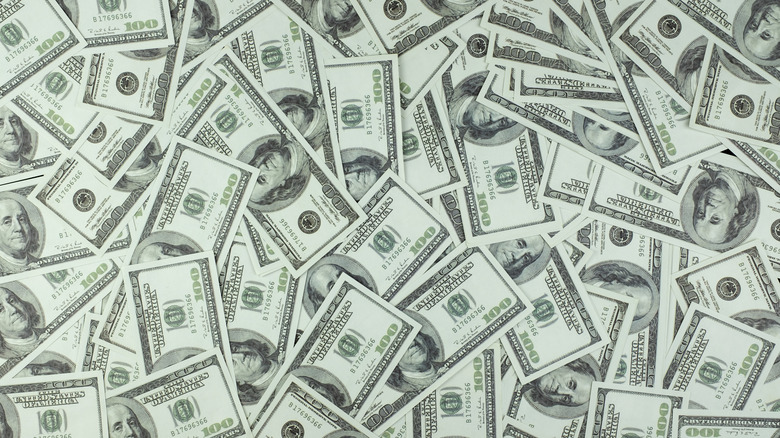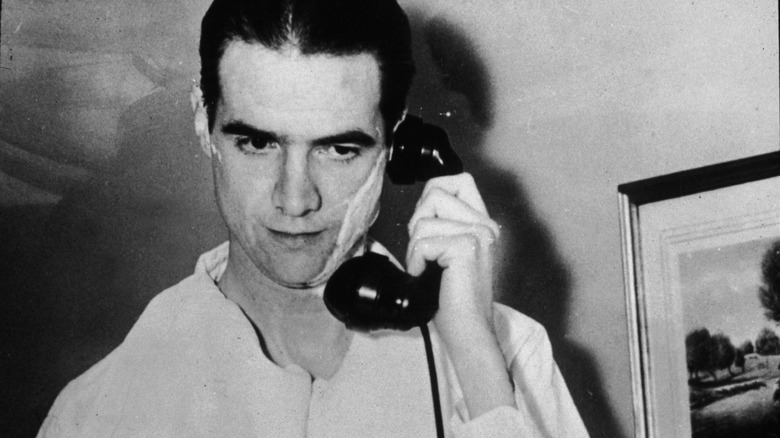The Howard Hughes Autobiography That Fooled The World
In the early 1970s, famously reclusive billionaire Howard Hughes had been out of the public eye for close to two decades. This was a major reason why people were surprised when a writer named Clifford Irving announced that the eccentric billionaire had contacted him about collaborating on an autobiography. According to The New York Times, publishing company McGraw-Hill paid Irving a massive $750,000 advance for what they thought was destined to be a best-seller that gave insight into an enigmatic figure who was instrumental in developing multiple industries, including Hollywood and aviation.
What McGraw-Hill didn't know when they cut a check for the manuscript was that they were falling victim to what was later revealed to be one of the biggest literary hoaxes of the 20th century, maybe even in history. Irving managed to survive months of questioning by talking his way past skeptics. In fact, he did such a good job of this that even when Howard Hughes himself claimed that the manuscript was a hoax, some people believed that it was a Hughes representative who was lying about the autobiography, not Irving (via The Washington Post).
Who was Howard Hughes?
Howard Hughes' father invented a drill bit that became integral to the drilling operations in Texas' rich oil fields. When his father died, Howard left school and took over the family business — the Hughes Tool Company — and inherited immense wealth. In 1926, Howard Hughes relocated to Hollywood, where he started producing movies that were notorious for going way over budget, with content that left censors with a lot of work on their hands. A man of many interests, Hughes was also fascinated by aviation and had studied engineering at the California Institute of Technology before his father's death (per Britannica). He started the Hughes Aviation Company in 1932, and went on to design, build, and test his own planes, including a massive wooden plane known variously as the H-4 Hercules or the Hughes Flying Boat, though often best remembered by the name it received from the press: the Spruce Goose (via Evergreen Aviation & Space Museum in McMinnville, Oregon, where the aircraft resides today).
In 1946, while testing one of his company's new planes, the XF-11, Hughes was seriously injured in a crash. Hughes developed a drug addiction and his lifelong obsessive-compulsive disorder worsened, according to the BBC. Hughes also had extreme germophobia and was known to wash his hands until they started bleeding and would burn his clothing if he thought there were too many germs on them. By the late 1950s, Hughes had vanished from public life and sequestered himself high atop the Desert Inn, Las Vegas, which he owned.
Clifford Irving writes a book about fraud
In the late 1960s, Clifford Irving was an American writer living on the Spanish island of Ibiza. Back then, Irving was not a household name by any stretch of the imagination, but he was a working writer who turned out both novels and nonfiction books. He became friends with a man named Elmyr de Hory. De Hory was known as an art forger and was renowned for his ability to replicate famous works and sell the forgeries to museums and collectors, per Sarasota Magazine. Always on the lookout for a good story, Irving decided to write about De Hory's exploits and published a book titled "Fake!"
The book turned out to be very popular, and according to The Washington Post it was adapted into a film by Orson Welles, titled "F for Fake." It's thought that Irving's experience working on "Fake!" may have inspired him to try crafting a forgery of his own. He didn't possess the painting skills of someone like Elmyr de Hory, but he was a talented writer. So, he decided to put those skills to use by fooling the entire literary world with a fake autobiography of the famously reclusive Howard Hughes.
Irving did his homework
Having studied the works of a master forger like Elmyr de Hory, Irving knew that he couldn't just throw something together and pass it off as a genuine article without doing some research first. Irving developed a cover story that was meant to set up the entire reason he would even be in possession of a Hughes manuscript in the first place. Irving claimed that he had sent a copy of "Fake!" to Hughes, who liked it so much that he proposed that he and Irving work together on his own autobiography.
According to The New York Times, Irving didn't just concoct a story; he forged letters that he then passed off as being from Hughes to corroborate the tale of how he connected with the billionaire. He did this by carefully studying Hughes' handwriting from a letter that had been printed in Newsweek. According to Sarasota Magazine, Irving enlisted the help of a friend from Ibiza in perfecting his Hughes letter forgery.
Irving then went to work writing the manuscript itself and while he was doing this, he started calling his publisher from around the world. In these calls, he claimed that he was meeting with Hughes — who by this point in time had left Las Vegas and moved all over the world — and interviewing him for the book.
The forged memoir made Irving a lot of money
According to The New York Times, Irving's publisher, McGraw-Hill, bought his story hook, line, and sinker. They wound up buying the rights to the manuscript and gave him an advance of $750,000, an obscene amount of money for those times. But that wasn't the only group ready to throw wads of cash in Clifford Irving's direction. He was paid $250,000 for the rights to serialize the book in Life magazine, and another $400,000 from paperback publisher Dell. The fervor around the book started to radiate out of the publishing industry and into the public at large, which was when Irving's story would really have to prove itself to be bulletproof.
It would seem that Irving partially selected Hughes not just because he was an intriguing, mysterious character that people would want to read about, but also because Hughes was unlikely to speak out against the book, since he hadn't been heard from directly in nearly 20 years. Still, Irving was faced with a gauntlet of skeptics, and somehow, some way, he managed to get past any challenge thrown in front of him. He emerged from an interview on "60 Minutes" unscathed, and managed to fool a lie detector test (via Sarasota Magazine).
In a shocking twist, Howard Hughes spoke out against the book, and it led to Irving's downfall
As the book was nearing its release date, one of the biggest things Irving didn't want to happen — and clearly gambled that it was virtually impossible — happened: Hughes himself spoke publicly for the first time in years to refute the legitimacy of Irving's book. According to Sarasota Magazine, Hughes held a conference call with a handful of reporters during which he told them flat-out that he had never met Clifford Irving and that the book was a hoax. Surprisingly, Irving had done such a great sales job that people still thought the book was the real deal, even with Hughes' denial. Perhaps the feeling was that the eccentric Hughes had changed his mind and wanted certain details contained in the book quashed.
Unfortunately for Irving, he was still caught in the midst of his hoax. According to The New York Times, as the heat was turning up, investigators in Switzerland discovered that a bank account under the name H.R. Hughes had actually been opened by Irving's wife Edith using a forged passport. From there, the seemingly watertight story Irving had crafted started to spring leaks, and soon enough, he was arrested. In 1972, Irving pled guilty to conspiracy charges and wound up serving just over half of a two-and-a-half-year prison sentence. Clifford Irving died in 2017 after a brief battle with pancreatic cancer, per The Washington Post.
